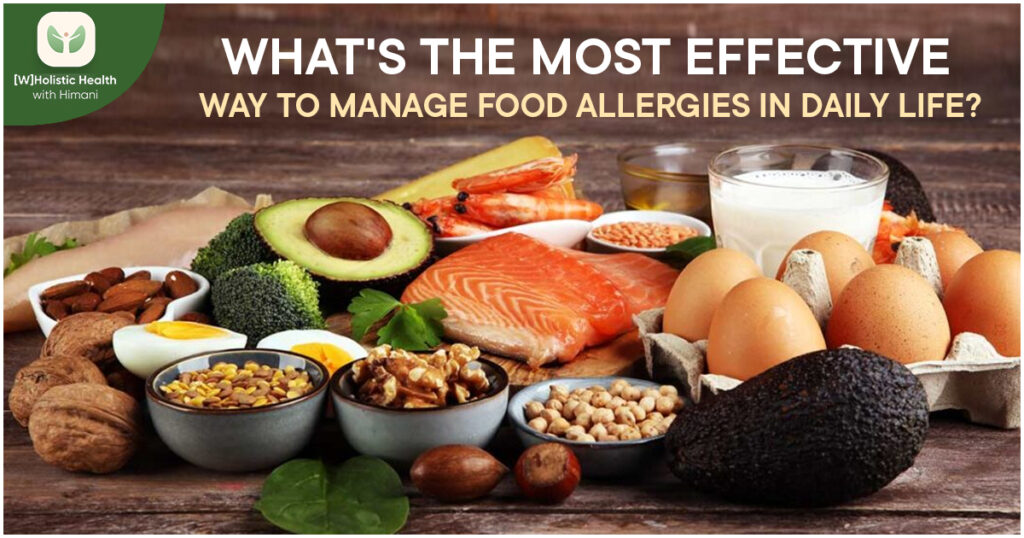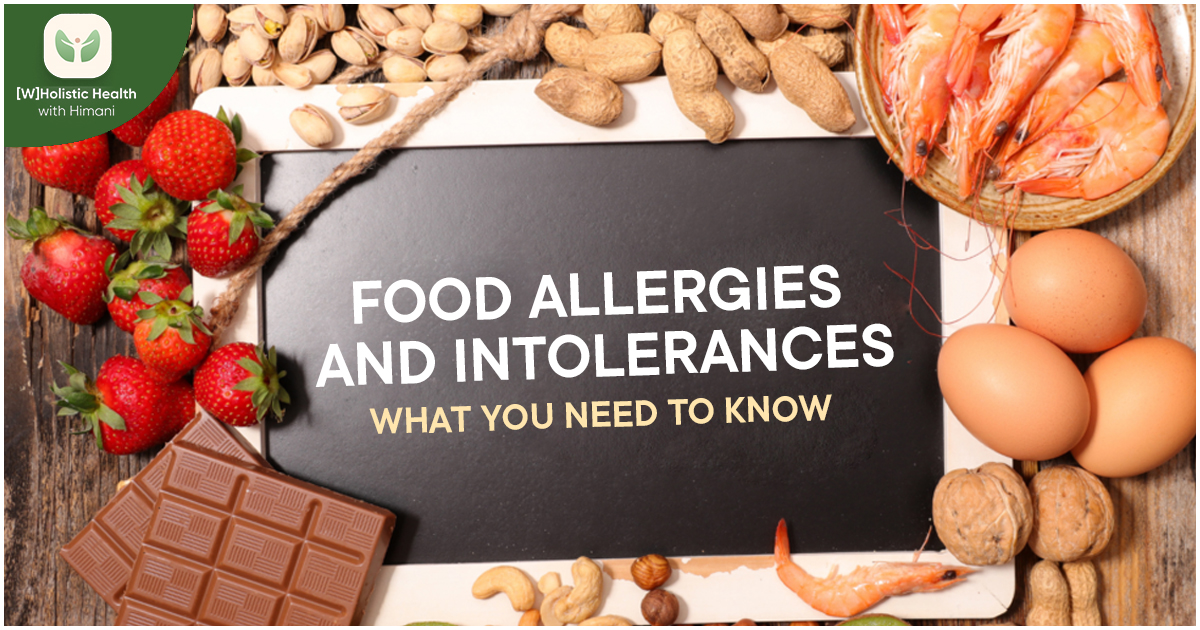Food allergies and intolerances have become increasingly prevalent in modern society, affecting millions worldwide. Recent studies suggest that up to 10% of adults and 8% of children have some form of food allergy, while food intolerances affect an even larger portion of the population. This rising prevalence has made understanding and managing these conditions more crucial.
At their core, food allergies and intolerances, though often confused, are distinctly different conditions. A food allergy involves an immune system response that can be life-threatening, triggering symptoms ranging from mild discomfort to severe anaphylaxis. In contrast, food intolerance typically involves difficulty digesting certain foods, leading to uncomfortable but generally not life-threatening symptoms.
Many misconceptions surround these conditions. One common myth is that food allergies are “all in your head” or that small amounts of an allergen won’t cause harm. These dangerous misconceptions can lead to serious consequences for allergy sufferers. The impact on daily life can be profound, affecting everything from grocery shopping to social dining and travel.
The landscape of food allergies has transformed dramatically in recent decades. Walk into any classroom today, and you’ll likely find at least two or three children with food allergies—a scenario that would have been rare just a few decades ago. This isn’t just anecdotal; research shows that food allergy prevalence has increased by 50% between 1997 and 2021, with nearly 32 million Americans now affected.
Table of Contents
ToggleWhy Are Food Allergies Becoming Such a Critical Health Issue?
The impact of this rise extends far beyond simple dietary restrictions. Each year, food allergies account for roughly 200,000 emergency room visits in the United States alone. But what’s driving this surge? Scientists point to several potential factors, including changes in our gut microbiome, increased environmental pollutants, and even our modern hygiene practices. The “hygiene hypothesis” suggests that our increasingly sterile environments might prevent our immune systems from responding properly to harmless substances like food proteins.
How Do Food Allergies Differ From Food Intolerances?
Picture two scenarios: In the first, Sarah eats a peanut butter sandwich and experiences severe swelling and difficulty breathing within minutes. In the second, Mike drinks a glass of milk and experiences bloating and discomfort several hours later. Both are adverse reactions to food but represent fundamentally different mechanisms within the body.
Read More: What Is Mindful Eating and Why Does It Matter?
Food allergies involve the immune system mounting an aggressive defense against proteins it mistakenly identifies as threats. This response can be swift and severe, potentially leading to anaphylaxis—a life-threatening reaction that can occur within minutes of exposure. The immune system releases massive amounts of chemicals, including histamine, leading to symptoms that can affect multiple body systems simultaneously.
On the other hand, food intolerances typically involve the digestive system’s inability to process certain foods properly. For instance, lactose intolerance occurs because the body doesn’t produce enough lactase enzymes to break down milk sugar. While uncomfortable and potentially disruptive to daily life, intolerances generally don’t pose the same immediate danger as allergies.
What Makes Certain Foods More Likely to Trigger Allergies?
The “Big Eight” allergens—milk, eggs, fish, shellfish, tree nuts, peanuts, wheat, and soy—are responsible for approximately 90% of all allergic reactions. But what makes these foods special? The answer lies in their protein structures and how our immune system perceives them.
Read More: Why Is Balanced Nutrition Essential for Optimal Health?
Take peanuts, for example. They contain remarkably stable proteins and are resistant to digestion, allowing them to reach the immune system relatively intact. These proteins also share structural similarities with other substances our immune system might recognize as threats, leading to cross-reactivity. This explains why someone allergic to birch pollen might react to certain fresh fruits—a phenomenon known as Oral Allergy Syndrome.
In recent years, new allergens have emerged of concern. Sesame has become so prevalent that it’s now considered the “ninth major allergen” in many countries. Additionally, novel food sources like cricket protein and lab-grown meat are introducing new potential allergens into our food supply, challenging our understanding of food allergy development.
How Does Your Body Signal a Food Allergy?
Understanding how allergic reactions manifest can be a matter of life and death. The immune response to food allergens can vary dramatically in timing and severity. Immediate reactions, known as IgE-mediated responses, typically occur within minutes to a few hours of exposure. These can range from mild symptoms like hives and itching to severe anaphylaxis.
Read More: High Protein Soya Bean Kebab: A Nutritious Powerhouse
However, not all allergic reactions follow this pattern. Non-IgE-mediated reactions might take days to develop, making them particularly challenging to identify and diagnose. These delayed reactions often affect the digestive system and can be easily confused with other conditions.
The severity of reactions can be unpredictable and influenced by various factors. Physical exercise, stress, illness, and hormonal changes can affect how your body responds to an allergen. This is why someone might tolerate a small amount of an allergen one day but react severely to the same amount on another occasion.

What’s the Most Effective Way to Manage Food Allergies in Daily Life?
Living with food allergies requires a comprehensive management approach that goes beyond simply avoiding trigger foods. Successful management begins with creating a detailed action plan that addresses everything from grocery shopping to dining out and emergency response.
Reading food labels becomes an essential skill, but it’s more complex than many realize. Manufacturers can list common allergens under different names—for instance, casein, whey, and lactoglobulin indicate milk proteins. Additionally, manufacturing processes can introduce cross-contamination risks, so phrases like “may contain” or “processed in a facility that also processes” become crucial warning signs.
The challenge extends to social situations. Family gatherings, workplace events, and dating can all become complicated when food allergies are involved. Successful navigation requires clear communication, preparation, and sometimes the courage to advocate for safety, even in uncomfortable social situations.
How Can You Create a Safe Kitchen Environment?
Creating a safe kitchen environment involves understanding the science of cross-contamination and implementing systematic approaches to prevent it. This goes beyond separating allergenic foods; it consists of understanding how allergens can spread through the air (like wheat flour), transfer through shared oils, and persist on surfaces even after routine cleaning.
Professional kitchens have developed sophisticated systems for allergen management that can be adapted for home use. These include color-coding systems for utensils and cutting boards, specific cleaning protocols, and careful storage practices. Even the order of food preparation becomes important—preparing allergen-free dishes first, before any allergenic ingredients are used in the kitchen.
What Role Does Mental Health Play in Managing Food Allergies?
The psychological impact of living with food allergies often goes underrecognized. Constant vigilance can lead to anxiety and social isolation. Parents of children with food allergies often experience significant stress and worry, which can transfer to their children.
Research shows that individuals with food allergies have higher rates of anxiety and depression compared to the general population. This psychological burden can be particularly heavy during major life transitions—starting school, going to college, entering the workforce, or traveling independently for the first time.
How Can You Navigate Travel and Social Situations?
Traveling with food allergies requires careful planning but shouldn’t mean limiting your horizons. Success stories abound of individuals who’ve traveled the world despite significant food allergies. The key lies in thorough preparation and communication.
International travel presents unique challenges, including language barriers and unfamiliar food practices. Many seasoned travelers with allergies carry translated allergy cards, research local cuisine extensively, and identify emergency medical facilities before their trips. Some even work with specialized travel agents who understand food allergy concerns.
What Does the Future Hold for Food Allergy Treatment?
The field of food allergy treatment is evolving rapidly. While strict avoidance remains the primary management strategy, new approaches are promising. Oral immunotherapy involves carefully controlled exposure to increasing amounts of an allergen and has successfully built tolerance for some individuals.
Research is also exploring the role of the microbiome in food allergies, leading to investigations of probiotic treatments. Based on new research, early exposure strategies for infants are being revised, potentially helping to prevent some food allergies from developing.
Where Can You Find Reliable Support and Resources on Food Allergy?
Building a support network is crucial for successfully managing food allergies and intolerances. This network should include medical professionals, but connecting with others who understand the daily challenges of living with food allergies is equally important.
Advocacy organizations are vital in providing education, support, and resources. They also influence policy changes affecting food labeling, school safety, and public awareness. Getting involved with these organizations can provide practical support and a sense of community.
Managing food allergies or intolerances is complex but navigable with the right knowledge and support. As our understanding of these conditions evolves, new management strategies and treatments offer hope for easier and safer lives for those affected. The key is staying informed, prepared, and connected to the broader community of individuals facing similar challenges.
While food allergies and intolerances present significant challenges, they don’t define a person’s life. With proper management, support, and a positive attitude, individuals with these conditions can lead full, active, and enjoyable lives while maintaining their health and safety.

I’m Himani, a Singapore-based health coach certified by IIN. I help clients create personalized nutrition and lifestyle plans that lead to lasting health goals. By focusing on individual needs, I provide actionable steps to support your journey to optimal well-being











